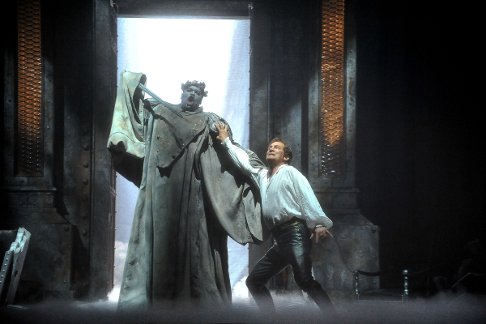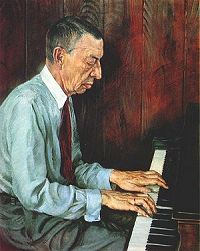 This show is scheduled to air today, October 31st, on
Halloween. It is a re-broadcast of the show from one year ago, because I don't really have enough scary music to make an entirely new Halloween show. The backgrounds to the pieces are interesting, and next year I will probably remove my spoken introductions, and put in a few more pieces from somewhere.
This show is scheduled to air today, October 31st, on
Halloween. It is a re-broadcast of the show from one year ago, because I don't really have enough scary music to make an entirely new Halloween show. The backgrounds to the pieces are interesting, and next year I will probably remove my spoken introductions, and put in a few more pieces from somewhere.Also, in contrast to more recent blog posts and podcasts, this post has lots of awesome images.
Part A
1 Introduction It is Halloween, and tons of little people are out on the street trying to scare everyone with their costumes. It seems like a good time to play some scary music!
Unfortunately, I know very little scary music. Scary classical music really came into its own in the early nineteenth century, and even then, only in program music, and musical theater and opera. Anyway, that’s going to be our theme.
2 Bach: Toccata and Fugue in D minor, BWV 565 For some reason, Bach’s perfectly innocent Toccata in D minor has become a favorite scary tune. There’s nothing scary about it, except that it is a big, showy piece that mad geniuses have often played in the movies. Here it is, and I hope you don’t get too scared! This is James Kibbie, and it is a very non-scary performance.
3 Barnes & Barnes: Fish Heads Halloween is also a time when we celebrate the macabre, and the weird and the disgusting. For instance, here is Fish Heads, by Barnes and Barnes, from a Dr. Demento anniversary album!
4 Ligeti: Music from 2001: A Space Odyssey Some of the scariest music I know was written for the movie 2001: A Space Odyssey. Here is a selection of it. The composer is Gyorgy Ligeti.
5 Brahms: Deutches Requiem Brahms’s German Requiem is a choral work to remember the dead. One number in it is about "all flesh is as grass," and is really the only somewhat ominous-sounding piece in it, except for The Last Trump, or rather, the Last Trombone, which I shall play for you sometime. Here is Alle Fleisches ist wie Gras, which means exactly what it sounds like: All flesh is as grass. (In German, you capitalize all Nouns.) [Otto Klemperer, Philharmonia Orchestra]
6, 7 Mussorgsky: The Gnome, and The Old Castle From Mussorgsky’s Pictures at an Exhibition, here is The Gnome. It is only scary to little kids, and maybe not even to them!
Next is The Old Castle, which seems haunted to me. [Jahni Mardjani, Georgian Festival Orchestra.]
Part B
8 Mussorgsky: The Catacombs, and With the Dead. The next two pieces in Pictures at an Exhibition are The Catacombs, and With the Dead. Mussorgsky is supposed to have written these pieces to describe an actual exhibition, but it must have been a strange one, if there was a picture called With the Dead in it. Actually, what I’m hearing is this. Mussorgsky depicted the people walking from one picture to the next, sort of a group march, and between pictures he had this promenade. But after the Catacombs, which, incidentally were an extensive system of tunnels under the City of Rome in the first century, in which the Christians and slaves hid from the Roman security, because of course, they were hunted. Today, we know, there are many tombs down there, some from before the Christians, and some of them were the Christians themselves. So we hear a minor key version of the promenade, presumably the museum group walking with great fear and trembling among the scary pictures.
9 Mussorgsky: Night on Bald Mountain This piece by Mussorgsky was used by Walt Disney in Fantasia where it was shown to represent a fantastic dance in a horror setting.
10 David Seville: The Witch Doctor The famous song from the Sixties, sung by the creator of the Chipmunks.
11 Stravinsky: Symphony of Psalms Stravinsky’s Symphony of Psalms is a choral work, with lots of amazing orchestral techniques. It sounds haunting, but is not at all intended to be scary. But this movement, starting with the phrase Exaudi, sounds weird and obsessive. Exaudi means Hear us, in Latin.
12 Holst: Mars the Bringer of War This piece is by Gustav Holst, a British composer, and this is one of the movements from The Planets, a very influential musical suite. Just listening to this one movement, you can see how Holst influenced movie music, especially Space music. The piece is in quintuple time, that is 5 beats to a bar. To make it clear, I have inserted a little clip with the opening notes simplified to just three instruments. [John Eliot Gardiner]
Part C
13 Dead Puppies Dead puppies, by Ogden Edsl.
14 The Monster Mash Monster Mash, by Bobby “Boris” Pickett.
15 The Time Warp The Time Warp, from the Rocky Horror Picture Show. The movie The Rocky Horror Picture Show was released in the late Seventies, and quickly became a weekly event in lots of College Town cinemas across the country. People would show up in costume, and sing along with the numbers. There were a number of famous names in the cast: Susan Sarandon, Meatloaf, and Tim Curry, to name just three. The Time Warp is probably the best known song in the movie.
16 Simon and Garfunkel: Richard Cory A song by Simon and Garfunkel, about a man who shot himself.
17 Beatles: A Day in The Life John Lennon’s strange song from Sgt Pepper.
18 Bach: Prelude This Bach prelude is performed by Brian Slawson, who calls it The Hammer.
19 Michael Jackson: Thriller The well-known hit by Michael Jackson, featuring a rap by Vincent Price.
Part D
20 John Lennon: Revolution 9 This is a whimsical piece by John Lennon featured in The Beatles, also called the White Album.
21 Kandosii: Sludge A recording by a band that does not exist any longer: Kandosii, based in Shamokin, Pennsylvania.
22 Mozart: (Don Giovanni) A cenar teco m'invitasti This song from Don Giovanni is entitled “You invited me to dinner.” Don Giovanni is a nobleman who makes a habit of seducing young women and then throwing them out. One time he invites the father of one of these girls to dinner, but when the old man discovers that the Don has pretended to be his daughter’s fiancée and spent the night with her, he challenges the Don to a duel, and gets killed by Don Giovanni. Then his ghost, animating a stone Statue, turns up at the Don’s castle, saying that the Don had invited him to dinner. The Don is scared stiff, and eventually is hounded into hell by the stone Statue. In the song you can hear the Statue announcing its arrival, and Don Giovanni stammering a reply, and the Don’s faithful servant Leporello muttering fearfully to himself. [Colin Davis, Covent Garden]





